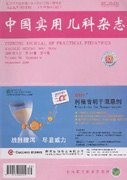|
Clinical study on the effect of sublingual immunotherapy for patients with allergic rhinitis of different severity
PANG Chong*,LIANG Jie-qiong,LIU Chuan-he,et al
2020, 35(2):
142-146.
DOI: 10.19538/j.ek2020020614
Objective To evaluate the clinical efficacy of sublingual immunotherapy(SLIT) in children with allergic rhinitis of different severity. Methods Children with allergic rhinitis(AR) aged 3-14 years admitted between May 2017 and December 2017 to the Department of Otolaryngology,Affiliated Children’s Hospital,Capital Institute of Pediatrics,were divided into control group(n=92,being given conventional drug therapy) and SLIT group(n=89,being given dust mite immunotherapy) according to different treatment methods. According to the total nasal symptoms score(TNSS),the control group was divided into mild subgroup(n=35),moderate subgroup(n=28),and severe subgroup(n=29);SLIT was divided into mild subgroup(n=27),moderate subgroup(n=33) and severe subgroup(n=29). The children were followed up for 6 months,1 year and 2 years and the data of TNSS,total rhinitis medication scores(TRMS) and visual analogue scale(VAS) at each time point were collected. Results (1)After 2 years of treatment,TNSS in the SLIT group and the control group was (0.61±0.73) and (1.61±1.17),TRMS was (0.21±0.41) and (0.59±0.70),and VAS was (0.63±0.70) and (1.53±1.24),respectively. There were significant differences between the two groups(Z values were 6.269,4.139 and 5.174,P<0.05). (2)Analysis in mild-subgroup(n=62) showed that,comparing SLIT group(n=27) with control group(n=35),there was no significant difference in TNSS,TRMS or VAS in 6 months and 1 year after treatment(Z values were -0.108,0.232 and 0.788;0.774,0.033 and -0.718;P>0.05);TRMS and VAS had no statistical difference after 2 years of treatment(Z values were 0.230,1.255,P>0.05),but there were significant differences in TNSS(Z values was 2.528,P<0.05). (3)Intra-group analysis in moderate subgroup(n=61) showed that,comparing SLIT group(n=33) with control group(n=28),there was no significant difference in TRMS or VAS after 6 months of treatment(Z value was -0.413,0.412,P>0.05),but TNSS had statistical difference(Z value was 2.397,P<0.05). There were significant differences in TNSS,TRMS and VAS between the two groups after 1 year and 2 years of treatment(Z values were 4.952,2.740 and 3.293;4.743,2.505 and 3.330;P<0.05). (4)Analysis in severe subgroup(n=58) showed that comparing SLIT group(n=29) with control group(n=29),there were significant differences in TNSS,TRMS and VAS after 6 months,1 year and 2 years of treatment(Z values were 2.567,2.086 and 2.781;4.996,4.264 and 2.756;4.253,4.480 and 4.515;P<0.05). Conclusion SLIT with standardized dust mite drops for 2 years in AR children can achieve better curative effect than symptomatic treatment alone,and children with severe symptoms of rhinitis will benefit more.
|

